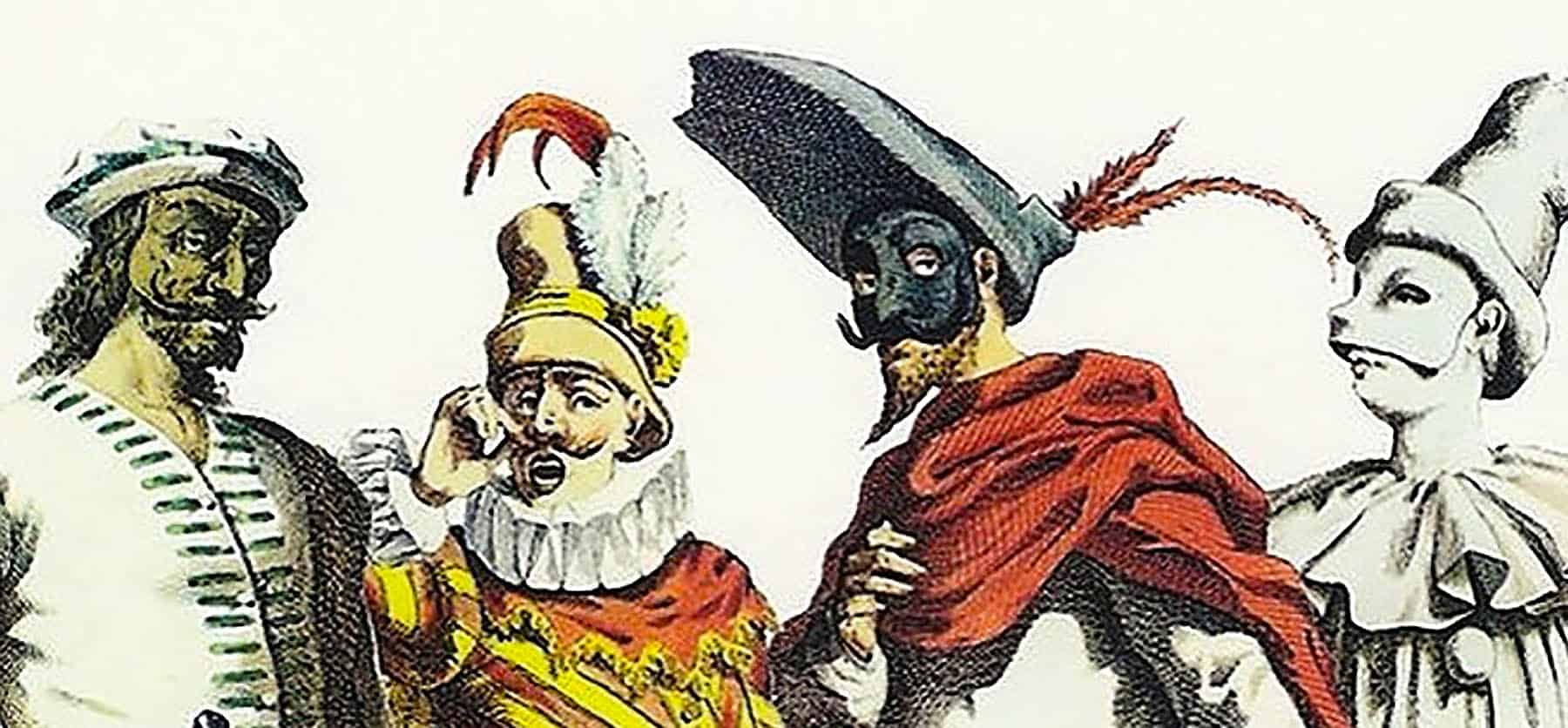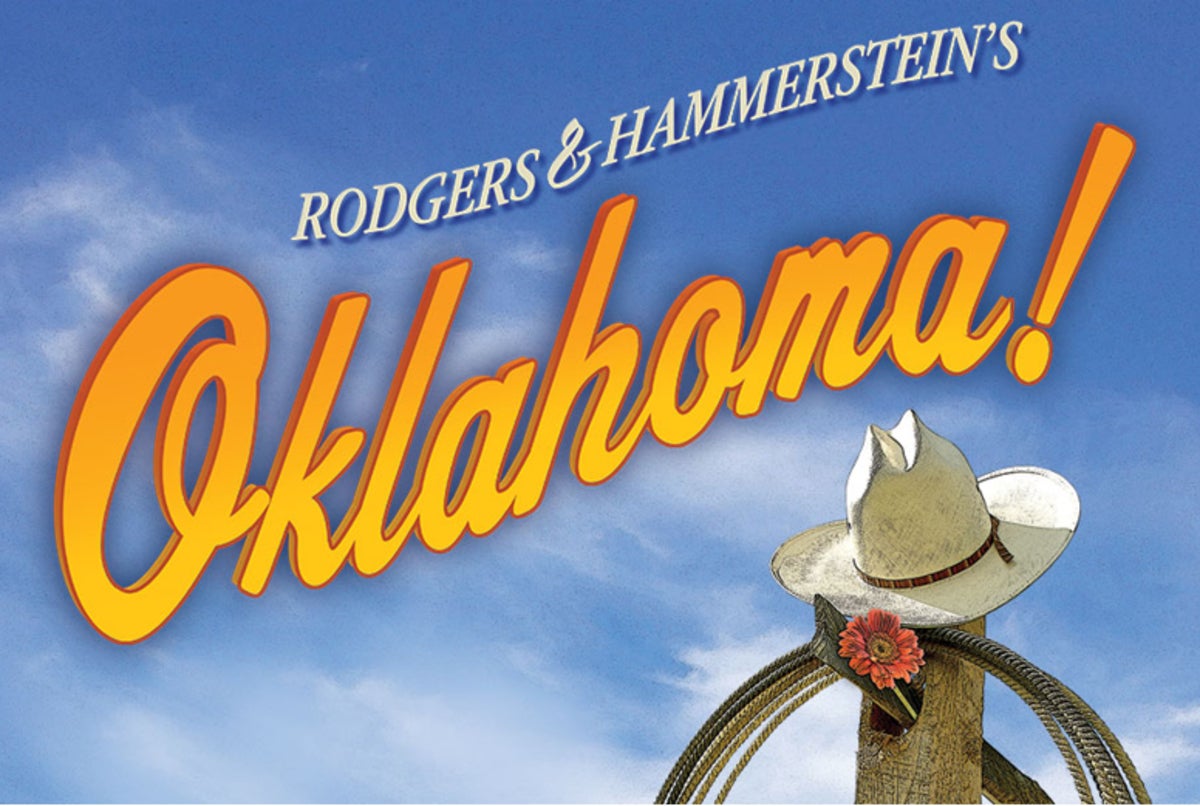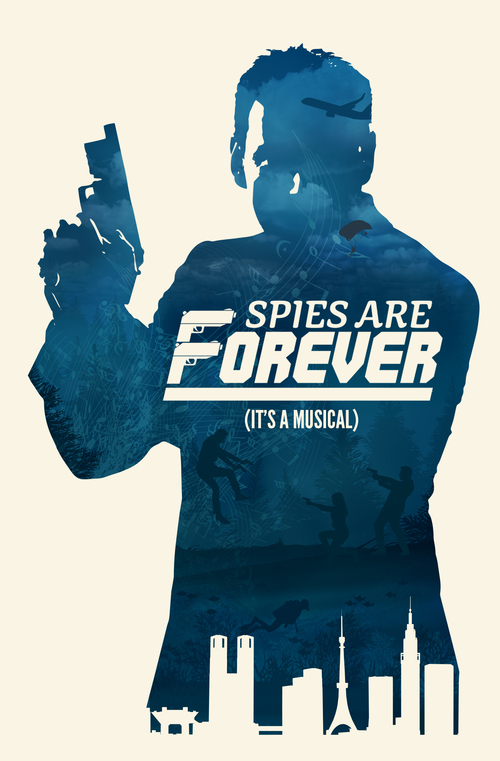The History of Musical Theatre
I spent DAYS of my life researching the history of musical theatre for a project last year only to condense it all into a small timeline. But you know what, I think it's time for all that work to shine.
When did musical theatre get started? Well it's not really a simple question, trust me I'm a nerd. The use of music and drama together dates back to ancient civilizations. Greek and Roman dramas often incorporated music and dance into their performances. Most medieval morality plays in Europe also included elements of music and spectacle. They were often set to church chants, with the intention of educating the audience on good Christian values. Meanwhile, in Renaissance Italy, the "commedia dell'arte" troupes presented improvised performances that combined music, dance, and comedy. Another possible source of inspiration for musical theatre is vaudeville shows. Vaudeville shows often featured dance numbers and musical acts
 |
| Some stock characters from Commedia Dell'arte |
However, musical theatre as we know it really began in the 19th century when operetta emerged as a popular form of musical entertainment. Operettas were light, comedic works that featured spoken dialogue and musical numbers. Interestingly, many operas used existing popular songs, such as John Gays 'The Beggar Opera'. This is similar to jukebox musicals of today such as 'Jagged Little Pill', '& Juliet', 'Jersey boys' and more. Modern musical theatre is often credited to a musical named 'The Black Crook' by Charles M Barras, but the popularization of musical theatre did not come until 1927 with 'Show Boat'. Julie can't help loving that man, and the audience couldn't help loving that form. It is this point in time in particular that bought about a shift in the way stories were written, songs were no longer standalone interruptions to the story but rather picked up the story and advanced the plot. Musical theatre only grew after this with help from a few important figures, but that's another article.
| The parties roarin' on in this 1920's Broadway theatre |
During the world wars, America was at an all time low in terms of morale. That's why a large majority of the musicals from the 40's to the 60s were extremely happy. This period is known as the Golden age of Broadway, and it was extravagant. A happy ending was almost a requirement for golden age shows, giving joy in times when people needed it most. Some prominent examples are Oklahoma!, Kiss me Kate, and a personal favorite, Guys and Dolls.
 |
| The Quintessential American Musical, Oklahoma! |
Then, we entered one of my favorite Broadway eras, known as the pre-contemporary era. A quote from 'Schmigadoon', a musical based tv show on Apple TV summarizes this era perfectly with the line 'Do we shock you?'. After the sickeningly sweet stories of the golden age, the audience decided to lean into the edgier sides of the genre. Musicals like the Rocky horror show, Rent, Hair and others encapsulated the edginess that shocked audiences, while also capturing a beautiful and worthwhile story. This is also where character focused narratives took hold. Audiences during the golden age were satisfied with the boy getting the girl, but now audiences wanted more. Social commentary and cultural diversity was everywhere, seen in Fiddler on the Roof, Les Misérables, etc.
| An edgy show at best. Chicago's risqué choreography shocked audiences in theatres, to the point of certain dance numbers being cut from the show after previews. |
One of the most interesting things to me is how the portrayal of Americans. In Oklahoma, Americans are portrayed in a very good light, shown as warriors who must eliminate external threats. They paint a beautiful picture of the American dream with all American cowboys. This musical took place when the country was reeling from the second world war, so the story had to portray the victories of the country. However, 50 years later, Miss Saigon tells a similar story after the Vietnam war, and it doesn't look good for the land of the free. Americans exterminating external threats is shown as a monstrous and unnecessary action. I think this shows that the audience was more willing to open their eyes and realize that oftentimes, outsiders aren't a threat, and no war has a good and bad side.
Moving on to another one of my favorite eras (feel like I've said this before, but honestly every era of Broadway is my favorite era of Broadway), the contemporary era. The name speaks for itself, but this era was all about modernization. Sets became more extravagant, with technology pushing the limits. One interesting thing from this era was the number of revivals. While revivals existed in the previous eras, this era ramped it up to the max. So many musicals were adaptations of existing works, or adaptations of previous plays. Similarly, jukebox musicals are all the rage, and TikTok has played a large role in popularizing shows. Shows like Beetlejuice which were near closing, were saved by a TikTok video posted by a cast member that blew up and got a lot of attention. Recently, a musical based off the film Ratatouille was composed, based only off of songs made by different TikTok users. As technology grows limitless, so do musicals. Thankfully, we remember our roots, and for every bright dazzling show, there are humbler shows that focus on the story.


Comments
Post a Comment